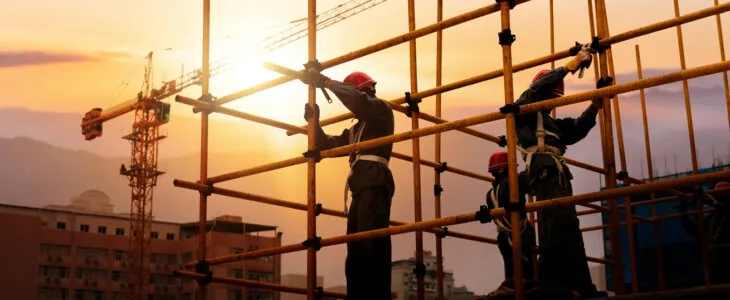Scaffolding allows construction workers to build and maintain tall buildings and structures. Without scaffolding, construction would be all but impossible. As important as scaffolding is, however, it routinely causes accidents that injure construction workers and passersby.
#1: Negligent Manufacturing
Scaffolding accidents sometimes occur as a result of negligent manufacturing practices, which can lead to the production of substandard equipment that endangers employees. When scaffolding is constructed with poor workmanship or insufficient materials, it becomes prone to malfunctions, structural failure, or collapse.
#2: Unsafe Design
Design defects also cause scaffolding accidents. For example, scaffolding sometimes lacks necessary safety features or may be inadequately engineered for certain environmental conditions or weight loads. These types of deficiencies can cause instability or collapse, endangering workers and pedestrians below.
#3: Poorly Secured Scaffolds
Even when scaffolds are properly designed and built, employers sometimes fail to secure them sufficiently. Improper installation and assembly of scaffolding can create instability during work, which presents a danger to everyone in the vicinity.
#4: Lack of Overhead Protection
A lack of overhead protection can expose employees on scaffolds to objects falling from above. When suitable protective measures are absent, such as netting or canopies, employees run the risk of being struck by debris, materials, or tools.
#5: Lack of Guardrails
Guardrails are a key component in preventing falls from scaffolding. When scaffolds aren’t equipped with properly installed guardrails, construction workers are placed at an increased risk of falling, which can lead to catastrophic injuries.
#6: Defective Fall Safety Systems
Fall safety systems, which include devices like harnesses and lanyards, are essential for preventing construction workers from falling from elevated heights. If these systems are not adequately maintained or are defective, they may fail to prevent falls. Therefore, employers should invest in fall protection equipment to ensure worker safety.
#7: Overloaded Scaffolding
Exceeding a scaffold’s weight capacity is a dangerous practice that can compromise its structural integrity. When scaffolds are overloaded, they become more prone to failures or collapses, thereby endangering employees on the platform and people on the ground below.
#8 Poor Maintenance
Finally, scaffolding must be regularly maintained to ensure that it is reliable and safe. Negligent or poor maintenance of scaffolding can lead to a multitude of safety issues, including rusting, loose components, or compromised structural integrity. Appropriate scaffolding maintenance practices, including repairs, inspections, and cleaning, are necessary to lower the risk of accidents and to create a safe environment for employees and others.
Contact a New York Construction Accident Attorney
If you’ve been hurt in a scaffolding accident in New York, you need an experienced New York construction accident attorney in your corner. At Dell & Dean, PLLC, our experienced and knowledgeable construction accident attorneys have what it takes to protect your legal rights. When you come to us for assistance after your scaffolding accident, we will aggressively seek financial compensation on your behalf. Please contact us today to arrange a consultation with a knowledgeable New York construction accident attorney.

